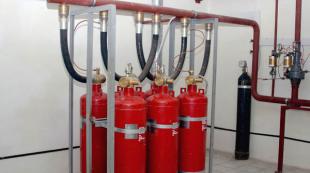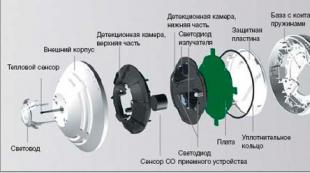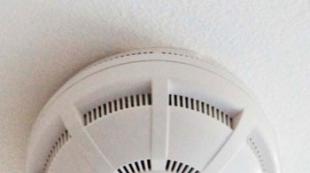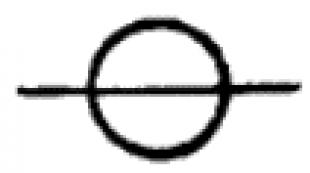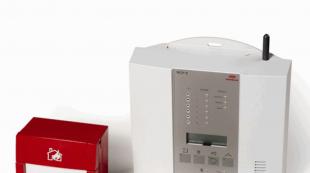UMZ 402 engine specifications
Each motorist is simply obliged to monitor his car and maintain it in good condition, and a lot of drivers are worried about the rather high gas consumption of the Gazelle 402. The engine and carburetor of this model are reliable, and not without reason they enjoy the love of the people, but they have a slight drawback, about which will be discussed.
About the engine
The production of one of the most relevant engines for cars began in the 60s of the last century. Production of the ZMZ-402 began at one plant, the process and model were improved, and over time, these engines began to be delivered to all plants specializing in the assembly of cars such as Volga and Gazelle.
Over the years, the brand has proven that it is not in vain that it takes its place in the market. Its main advantages:
- starts even at sufficiently low temperatures;
- simplicity in operation and maintenance;
- low cost of spare parts;
- reliability in use;
- the possibility of using any type of fuel.
But, ZMZ-402 has its drawbacks. Fuel consumption in a Gazelle with a 402 engine is a fairly relevant question, often asked by the owners of such cars as Volga and GAZelle, which made up most of the country's vehicles. These machines are reliable, and not yet in such a distant past were very popular.. But, today they are fading into the background and are gradually turning into a rarity. One reason for this is precisely the consumption of fuel.
Fuel consumption
What affects him
Gasoline consumption per gazelle 402 per 100 km depends on various conditions, and can reach a figure of more than 20 liters. Today, it is because of this figure that the ZMZ-402 cannot compete with other cars, since their performance is almost two times lower. But, if desired, this drawback can be eliminated by observing simple rules or by resorting to a little trick, for example, replacing the carburetor engine.

The first factor affecting fuel consumption and the amount of fuel consumed in a Gazelle 402 with a Solex carburetor, which is most often installed on these engine models, is driver skill. The higher the quality of driving, a more even speed and less sharp bends - the lower the fuel consumption. Sharp braking and frequent acceleration - the most malicious enemies to save every car, especially a gazelle. The surest option and the best solution would be to simply follow the established rules regarding speed on a given section of the road.
Do the actual indicators indicated in the documents match
The average fuel consumption on the highway per 100 km is about 20 liters, while in fact this figure may be higher, especially if you drive around the city. Here it is necessary to take into account not only the driver’s professionalism, but also the quality of our roads, which often force us to exceed fuel consumption standards. As mentioned above, a sharp braking and a sudden increase in speed do not have a very positive effect on saving gasoline or gas, and such situations are not uncommon on our highways and tracks, especially if you use such a massive machine like the Gazelle.
Troubleshooting
How to reduce fuel consumption? We already know that this is influenced by the driving style and quality of the road surface, but that's not all. What other factors are worth paying attention to:
- Fuel consumption also depends on the season. In cold weather, a fairly large part is used for warming up, especially if trips are made for a short distance. It is often necessary to jam, start and warm up the engine.
- The condition of the engine and the car as a whole. If the quality of the characteristics deteriorates due to any malfunctions, the fuel simply flies out into the pipe, thereby increasing its consumption.
- Workload cars. The Gazelle itself is not light in weight, and the larger the load is transported by car, the greater the amount of fuel used.
The simplest solution is to simply change the fuel - switch from gas to gas.
In general, gas is more economical, especially when driving along the highway, but this is not an ideal option. Consumption does not become much smaller, and, moreover, the machine can simply stop pulling.
If you decide to come close to solving the issue of fuel economy for your Gazelle, it is worth considering in detail all the nuances.
The actual fuel consumption of the Gazelle 402 may be much larger than expected, but if you take into account all the factors and follow the advice of experienced drivers, it can be significantly reduced. Forever technical progress allows us to improve precisely specifications a car that will contribute well to saving. One of these solutions may be the replacement of some parts of the fuel system of the car. To do this, you should contact the salon, where they will advise you on the best option and make a quality replacement and repair.

Change of technical characteristics
Significant fuel consumption of the engine at the Gazelle can contribute to improper or inaccurate operation of the car, for example:
- late ignition;
- driving on an unheated engine;
- untimely replacement of worn parts.
A simple attentive attitude to your car will help not only save fuel, but also extend the years of service of your car.
Small details that many do not pay attention to will help reduce the actual fuel consumption of the Gazelle 402. What are these nuances - you can find out in the salons where cars are serviced, from a more experienced driver, or from our article. What exactly is worth paying attention to:
- whether the gaps in the spark plugs are correctly set, and the operation of the candles themselves - is there any interruption in it;
- use of headlights. High beam increases fuel consumption by 10%, low beam - by 5%;
- it is necessary to monitor the temperature of the liquid for cooling. If it is lower than estimated, it also increases fuel consumption;
- it is worthwhile to monitor tire pressure. If it is lowered, this also affects the amount of gasoline or gas used;
- timely replacement of the air filter is necessary;
- low-quality fuel is consumed faster and in large quantities.
As you can see, any detail is important to eliminate the problem regarding fuel consumption in the Gazelle 402 with a carburetor. It is worth spending a little time, paying attention to almost all systems of the car, in order to subsequently save your nerves and money.
Total
The Gazelle ZMZ-402 engine with a correctly selected carburetor is deservedly popular, because when a breakdown occurs, replacing parts does not require very high financial costs, repairs are quick enough and usually do not cause much trouble. FROM the motor alone guarantees a safe ride. The only drawback is the very high fuel consumption, but, if desired, this problem can be eliminated by applying not so much effort.
The Gazelle, which has become an indispensable vehicle with a 402nd engine, still requires attention over the years.
Electrical wiring does not appear among the parts to be planned replaced, however, an electrical circuit is often required when carrying out repairs in the engine compartment.
Equipped with a ZMZ-402 carburetor engine, the car successfully develops its motor resource, and when the time comes for a major overhaul, many owners think not only about restoration, but also about reconfiguring its work.
And since carburetor versions of power units are a thing of the past, the question of the prospects of using a restored motor is acute.
Gazelle car electrical system
The transition to injection multi-valve engines is possible and even recommended by the automaker, however, this approach is not always suitable for the owners, especially from the financial point of view.
Tip: Be that as it may, while removing the motor for bulkhead, the owner has the opportunity to replace the old wiring.
If the resource of the restored power unit is encouraging, and there is a Gazelle wiring diagram at hand, the 402 engine may well serve more than one hundred thousand kilometers.

Replacing wiring on a Gazelle car
The reasons for the need for replacement are not only in connection with the bulkhead of the power unit, but also:
- Due to the natural wear of the wires;
- Stratification of insulation due to natural aging;
- Mechanical damage (kinks, badass);
- Short circuits in a particular circuit;
- Oxidation of contacts and connectors.
Additional replacement materials
In addition to purchasing new electrical wiring, the appropriate motor used is also subject to replacement:
- High voltage wires;
- Electronic switch (in later versions of the ZMZ-402 series motors);
- Ignition coil;
- Battery charge relay;
- Contact group of the block of safety locks;
- Egnition lock.
Places requiring installation work
Laying the wiring harness is not difficult, especially since the places of their fastening on the frame are provided initially (gutters, technological holes, etc.).

However, by complexity, the replacement work is divided into areas of responsibility:
- Hood space;
- Vehicle interior;
- The back of the body.
The simplest in terms of connection is the rear of the car, where you only need to fix the harness and connect the taillights and the fuel level sensor in the gas tank. More complex are the interior and the engine compartment.
Installation of wiring on a car Gazelle
Posting to the Gazelle 402 is divided into these zones.
Having laid out a new set of wires in free space, its orientation will be immediately noticeable:
- The longest and thinnest harness is designed for the rear;
- Shorter - for the salon;
- The largest in number of wires and connectors - for the engine compartment.
The beginning of work on the replacement of wiring is carried out from the cab:
- We fix the harness in the cabin;
- We drag the second wiring harness under the hood and fasten;
- We drag the rear harness along the frame, connect the connectors, focusing on the color of the wires;

In the engine compartment:
- We divide the harness on the right and left sides, focusing on the length and connectors;
- We connect the switch;
- We feed the wire to the generator;
- We connect the voltage regulator;
- We connect the ignition coil;
- We connect the wiper terminals, cornering relay;
Tip: Gazelle 402 wiring has color divisions that match the colors depicted on.
In the cab:
- We connect the connector to the fuse box;
- We feed the wire to the heater;
- We connect the light switch on the steering column;
- On the instrument panel, we energize the central switch of the head light, the emergency button, connect the devices.
Conclusions: using the factory or other, you can independently replace the old wires, adhering to the conventional and color symbols.
First, let's figure out which cars were equipped with what engines from the factory.
FROM 1970
by 1986
year:
The Volga GAZ-24 car was equipped with an engine ZMZ-24D - compression ratio 8.2, power 95 hp
The Volga GAZ-24-01 car was equipped with an engine ZMZ-2401 - compression ratio 6.7, power 85 hp
FROM 1986
years to 1992
year:
The Volga GAZ-24-10 car was equipped with an engine ZMZ-402.10 - compression ratio 8.2, power 100 hp
The Volga GAZ-24-11 car was equipped with an engine ZMZ-4021.10 - compression ratio 6.7, power 90 hp
FROM 1992
years and until the end of the production of carburetor Volga cars were equipped with engines ZMZ-402.10 and 4021.10
. without any significant design changes.
The main characteristics and design differences of the engines ZMZ-24D, ZMZ-2401, ZMZ-402.10, zmz-4021.10:
| ZMZ-24D | ZMZ-2401 | ZMZ-402.10 | ZMZ-4021.10 | |
| Displacement, cc | 2445 | 2445 | 2445 | 2445 |
| Maximum power at 4,500 rpm | 95 | 85 | 100 | 90 |
| Compression ratio | 8,2 | 6,7 | 8,2 | 6,7 |
| Maximum torque at 2400 rpm, N * m | 186,3 | 171,6 | 182 | 172 |
| Fuel | AI-93 | A-76 | AI-93 | A-76 |
| Specific fuel consumption g / kW, h (g / hp.h) | 306(225) | 312(230) | 292,4(215) | 299,2(220) |
| Bore and stroke, mm | 92x92 | 92x92 | 92x92 | 92x92 |
| Water pump placement | Cylinder head | Cylinder head | cylinder block | cylinder block |
| Diameter of exhaust valves, mm | 36 | 36 | 39 | 39 |
| Inlet Valve Diameter mm | 47 | 47 | 47 | 47 |
| Water distribution pipe in the cylinder head | there is | there is | not | not |
| Carburetor | K-151 | K-151 | ||
| Cylinder operation | 1-2-4-3 | 1-2-4-3 | 1-2-4-3 | 1-2-4-3 |
| Double valve springs | not | not | yes | yes |
| The number of racks of the axis of the rocker | 4 | 4 | 6 | 6 |
Based on the table and factory reports, we see that the main differences between ZMZ-402 and ZMZ-24D are:
- cooling system with a pump on a cylinder block without a water distribution pipe with a changed fluid circulation
- increased diameter of exhaust valves
- double valve springs installed (higher reliability)
- two additional posts are installed for the edges of the rocker arm axis
- regular carburetor replaced with K-151 (and modifications including K-151-C)
- cylinder head mounting studs of increased diameter and other threads (instead of M11x1 on M12x1.25)
- increased mass of the pulley-damper of the crankshaft
- camshaft cam profile changed
- camshaft has become cast iron instead of steel
- oil pump with aluminum oil intake instead of steel and with increased productivity
- redesigned oil cooler
p.s. Engine characteristics are given from the factory manuals for the operation of GAZ-24 and GAZ-24-10, respectively. It should be borne in mind that according to current methods of measuring power and torque, motors show more modest indicators than stated (an average of 5 hp and 5 Nm less). In any case, the difference between ZMZ-24D and ZMZ-402 is clearly visible in the table. We see that the old man ZMZ-24D has a slightly more traction characteristic than the ZMZ-402. This is due to the above changes in design.


